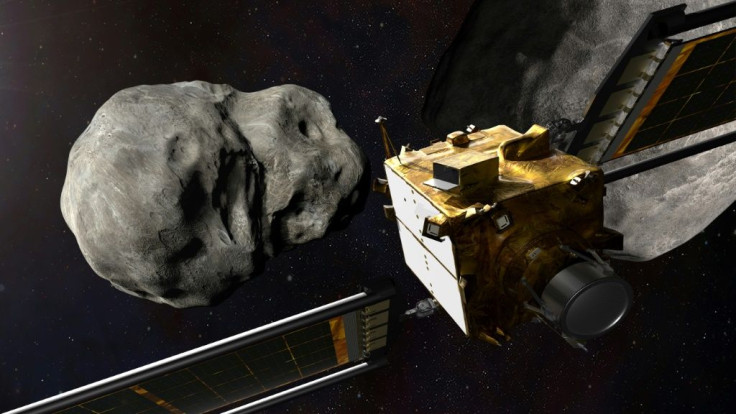NASA's DART Spots Its Target Asteroid Ahead Of Collision [Photo]
KEY POINTS
- DART's DRACO instrument captured images of Didymos asteroid system
- Such images are important for the success of the NASA mission
- DART is the first-ever mission to deflect an asteroid through kinetic impact
The "first-ever" mission to redirect an asteroid's motion is currently underway. NASA has now shared another first: a photo of the target asteroid captured by the mission spacecraft itself.
NASA's Double Asteroid Redirection Test (DART) spacecraft is currently on its way to the near-Earth asteroid binary system Didymos. This is comprised of the 780-meter Didymos and 160-meter Dimorphos, the latter being the target of the DART mission. The spacecraft will intentionally crash into Dimorphos on Sept. 26 to "change its orbit within the binary system."
DART got a first look at its target system recently. On Thursday, the agency shared the image captured by its Didymos Reconnaissance and Asteroid Camera for Optical navigation (DRACO) instrument.
In the image, one can see the Didymos system as a faint dot. According to the agency, the image is actually a composite of 243 images taken by DRACO on July 27, and they were taken from 20 million miles away from the spacecraft, which is why the system still doesn't look quite clear.
DART sets sights on asteroid target ☄️🛰️@NASA's #DARTMission spacecraft recently got a first look at Didymos and its asteroid moonlet, Dimorphos. On Sept. 26, DART will intentionally impact Dimorphos to change its speed & orbit.
— NASA Asteroid Watch (@AsteroidWatch) September 7, 2022
Learn more: https://t.co/xFtJdCEdkL pic.twitter.com/AjDtr0V2ZS
In a NASA statement, DART mission systems engineer at the Johns Hopkins Applied Physics Laboratory, Elena Adams, said: "This first set of images is being used as a test to prove our imaging techniques."
Indeed, such images are actually an important part of the DART mission. Apart from showcasing DRACO's capabilities to image its targets, they are key to accurately guiding DART to its target asteroid.
It is important that DART see its target so that engineers can guide the spacecraft toward it. In the last few hours before the impact, DART will have to get to the target on its own.
"Seeing the DRACO images of Didymos for the first time, we can iron out the best settings for DRACO and fine-tune the software," explained Julie Bellerose, the DART navigation lead at NASA's Jet Propulsion Laboratory. "In September, we'll refine where DART is aiming by getting a more precise determination of Didymos' location."
"While the asteroid poses no threat to Earth, this is the world's first test of the kinetic impact technique, using a spacecraft to deflect an asteroid for planetary defense," NASA said.

© Copyright IBTimes 2024. All rights reserved.






















